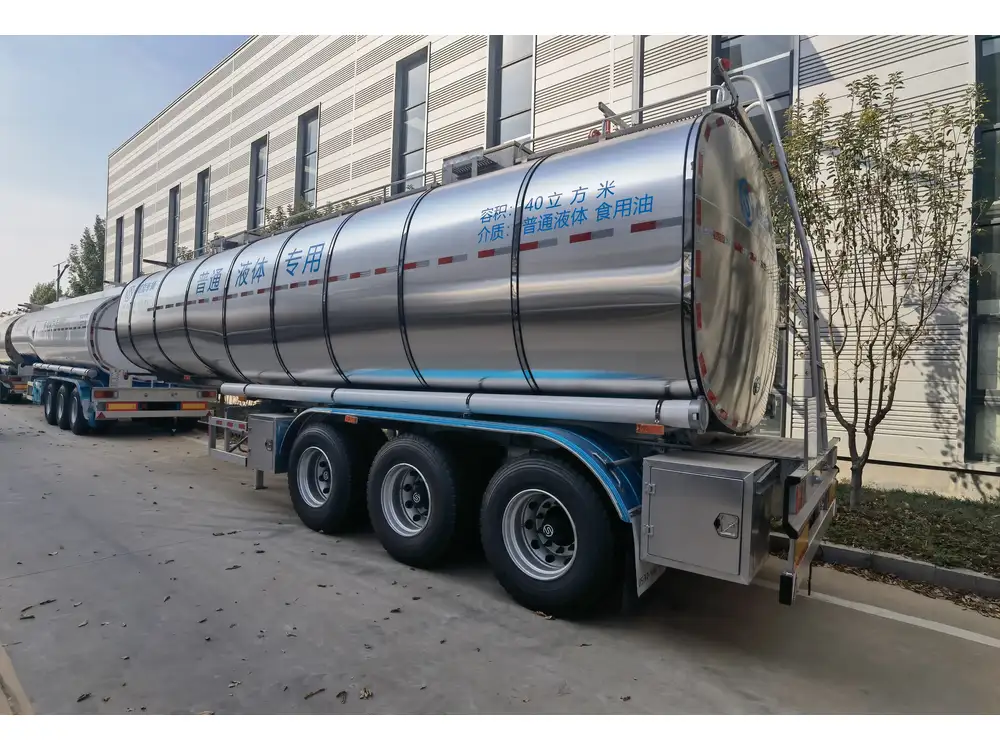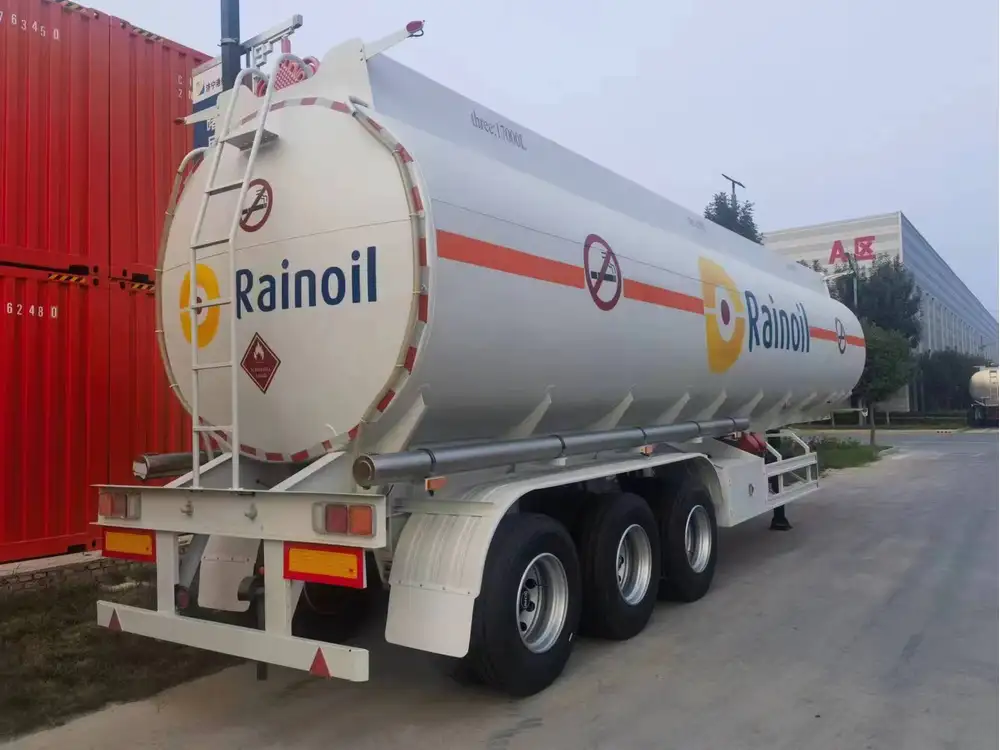When it comes to transportation and logistics, the use of forklifts and flatbed trailers often intersects. This intersection raises a critical question: Can you drive a forklift on a flatbed trailer? In this article, we delve into this query and explore various aspects, including safety regulations, operational protocols, and practical implications for drivers and manufacturers alike.
Understanding the Basics of Forklifts and Flatbed Trailers
What is a Forklift?
Forklifts are powered industrial trucks used to lift and transport materials over short distances. They come in various forms, including:
| Type | Description |
|---|---|
| Counterbalance | The most common type, featuring a weight at the back to counterbalance loads. |
| Reach Trucks | Designed for reaching high shelves, ideal for warehouse applications. |
| Pallet Jacks | Manual or powered devices used for moving pallets in warehouses. |

What is a Flatbed Trailer?
Flatbed trailers are versatile vehicles used for transporting large and heavy loads. Unlike enclosed trailers, flatbeds provide easier access for loading and unloading cargo. Key characteristics include:
| Feature | Description |
|---|---|
| Open Design | No sides or roof, allowing for versatile load handling. |
| Variety of Sizes | Available in various lengths and weight capacities. |
| Easy Loading Access | Forklifts, cranes, and other machinery can load directly. |
Forklift Capabilities
Forklifts vary in weight capacity, with common ranges from 3,000 to 15,000 pounds or more. Understanding your forklift’s specifications is crucial when considering its maneuverability on a flatbed trailer.
Legal Implications: Can You Drive a Forklift on a Flatbed Trailer?

Regulatory Guidelines
Driving a forklift onto a flatbed trailer is subject to an array of legal regulations established by agencies such as OSHA (Occupational Safety and Health Administration) and the DOT (Department of Transportation). Here are some essential regulations and considerations:
- Load Capacity: Ensure that the flatbed trailer can withstand the weight of both the forklift and the payload. Overloading can lead to costly accidents and fines.
- Stability Requirements: Forklift drivers must ensure that the load remains stable during transit. The trailer’s design should facilitate this stability.
- Driver Certifications: Forklift operators must be certified in accordance with OSHA standards. Operating a forklift on any surface—trailer or otherwise—requires adherence to specific guidelines.
Insurance and Liability
Proper insurance coverage is essential when driving a forklift onto a flatbed trailer. Insurance policies often vary, addressing liability for accidents that occur during loading or transportation. Factors include:
- Cargo Damage: Coverage for damages to the forklift or the load itself.
- Liability Insurance: Protection against personal injury or property damage caused during operation.
Practical Considerations for Driving a Forklift on a Flatbed Trailer

Loading Procedures
Step-by-Step Guide to Safely Drive a Forklift onto a Flatbed Trailer:
- Preparation: Ensure the trailer is parked on level ground. Confirm that the parking brakes are engaged.
- Inspection: Conduct a thorough inspection of the forklift and flatbed trailer. Check hydraulic systems, tires, and load security.
- Clear Path: Remove any obstacles that could impede the loading process.
- Communication: Use hand signals or two-way radios to communicate with ground personnel.
- Operational Steps:
- Drive the forklift at a controlled speed.
- Align the forklift with the trailer.
- Confirm the area is free of personnel.
- Slowly drive the forklift onto the trailer, keeping the load level.
Securing the Forklift
Once the forklift is successfully on the flatbed, securing it is vital. Proper methods include:
| Method | Description |
|---|---|
| Straps | Use heavy-duty straps to bind the forklift to the trailer. |
| Wheel Chocks | Place wheel chocks against the tires to add stability. |
| Bracing | Utilize wooden blocks or pallets for additional support. |
Safety Best Practices
Safety must be the overarching priority during the entire operation. Consider these best practices:
- Always wear appropriate personal protective equipment (PPE).
- Ensure adequate lighting if performing loading at night or in dim environments.
- Implement a designated “spotter” to facilitate communication and ensure safety.
- Train all personnel involved in the loading and transportation process.

Potential Issues and Solutions
Stability Concerns
Driving a forklift onto a flatbed trailer can create unique stability challenges. Factors affecting stability include:
- Load Distribution: Imbalance can lead to tipping. Ensuring uniform weight distribution is crucial.
- Surface Conditions: A flatbed trailer may shift during loading. Utilize anti-slip mats or surface grips.
Solutions:
- Conduct pre-loading stability tests.
- Adjust the position of the loaded pallets to mitigate risk.
Forklift and Trailer Compatibility
Compatibility between the forklift and flatbed trailer is another essential consideration. Variations in forklift design and trailer specifications can lead to operational inefficiencies.
Recommendations:
- Always verify equipment compatibility before any loading process.
- Consult equipment manuals and guidelines provided by manufacturers to ensure smooth operation.

Alternatives to Using a Forklift on a Flatbed Trailer
Other Loading Technologies
If using a forklift isn’t feasible, consider alternative loading technologies:
| Technology | Description |
|---|---|
| Cranes | Effective for lifting heavy loads directly onto flatbeds. |
| Conveyor Belts | Automated systems can transport items from one location to another without lifting. |
| Lift Gates | Offers a hydraulic lift option for loading items onto trailers. |
Relying on Professional Services
For complex or large-scale operations, relying on professional logistics services may provide greater efficiency and safety. These services typically offer:
- Expertise in Load Management: Professional operators understand best practices and legal requirements.
- Advanced Equipment: Access to specialized loading equipment can streamline operations.
- Insurance: Professional services often carry comprehensive insurance policies covering various liabilities.

Conclusion: Navigating Forklifts and Flatbed Trailers
The question “Can you drive a forklift on a flatbed trailer?” transcends mere curiosity; it embodies the intricacies of logistics, safety, and regulation adherence. While it is indeed possible to drive a forklift onto a flatbed trailer, ensuring that all safety protocols, legal requirements, and compatibility factors are stringently observed is paramount.
By following the outlined guidelines and recommendations in this article, manufacturers, operators, and logistics providers can correctly and safely integrate forklifts and flatbed trailers into their workflow while minimizing risks. In an industry where safety and efficiency are non-negotiable, understanding and navigating these elements will yield positive outcomes and streamline operations.
As the logistics landscape continues to evolve, keeping abreast of regulations, technologies, and best practices related to forklift and flatbed trailer use will be key to maintaining competitive advantages in the marketplace.



